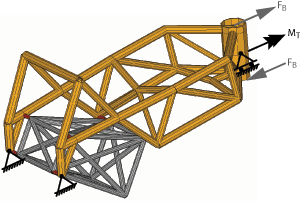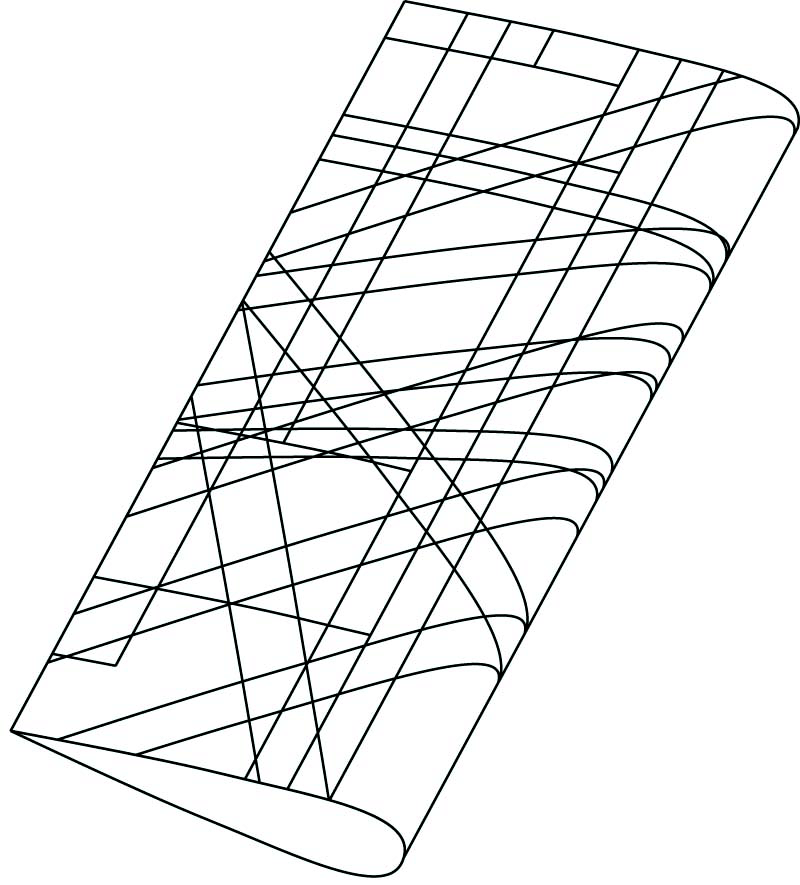|
Examples
Motorbike Frame
FELyX was used to optimize a motorbike frame with evolutionary algorithm. The objective function was to minimize the weight by a specified torsional stiffness.

The FE model is built in ANSYS using standard 2-node beam elements and then exported as a DB (includes all finite element information). All required properties in the optimization process are evaluated in FELyX.
- Weight by summing up the weight of the finite elements
- Torsional stiffness: Linear static analysis with a torsional moment M applied to the headset
- Braking load: A pair of forces acting on the headset
Altogether, two linear static analyses have to be processed. On a 2.8 GHz Pentium 4 computer running LINUX, a complete evaluation only takes around 0.05 s. The main reason to use FELyX instead of ANSYS is the cost of computational cost. The motorbike frame was evaluated about 40 million times during the optimization process and therefore computational cost is definitely an issue.
Global Laminate Optimization
An other application with FELyX is the optimization of a composite laminate under the topic of optimal shape, size, and position of patches of reinforcement fibers in a real world structure. The objective function is to minimize the angle of attack at the tip of a L-Shape keel.
 
The lamination plan is generated by a patch concept in CATIA. Finally, the FE model is imported in FELyX. Some special information of the elements are used for this FE calculation and optimization process. This information are not available in ANSYS or CATIA. Hence only an optimization with FELyX as FE tool is possible for this example.
Applications with the FELyX tool can be found here.
|